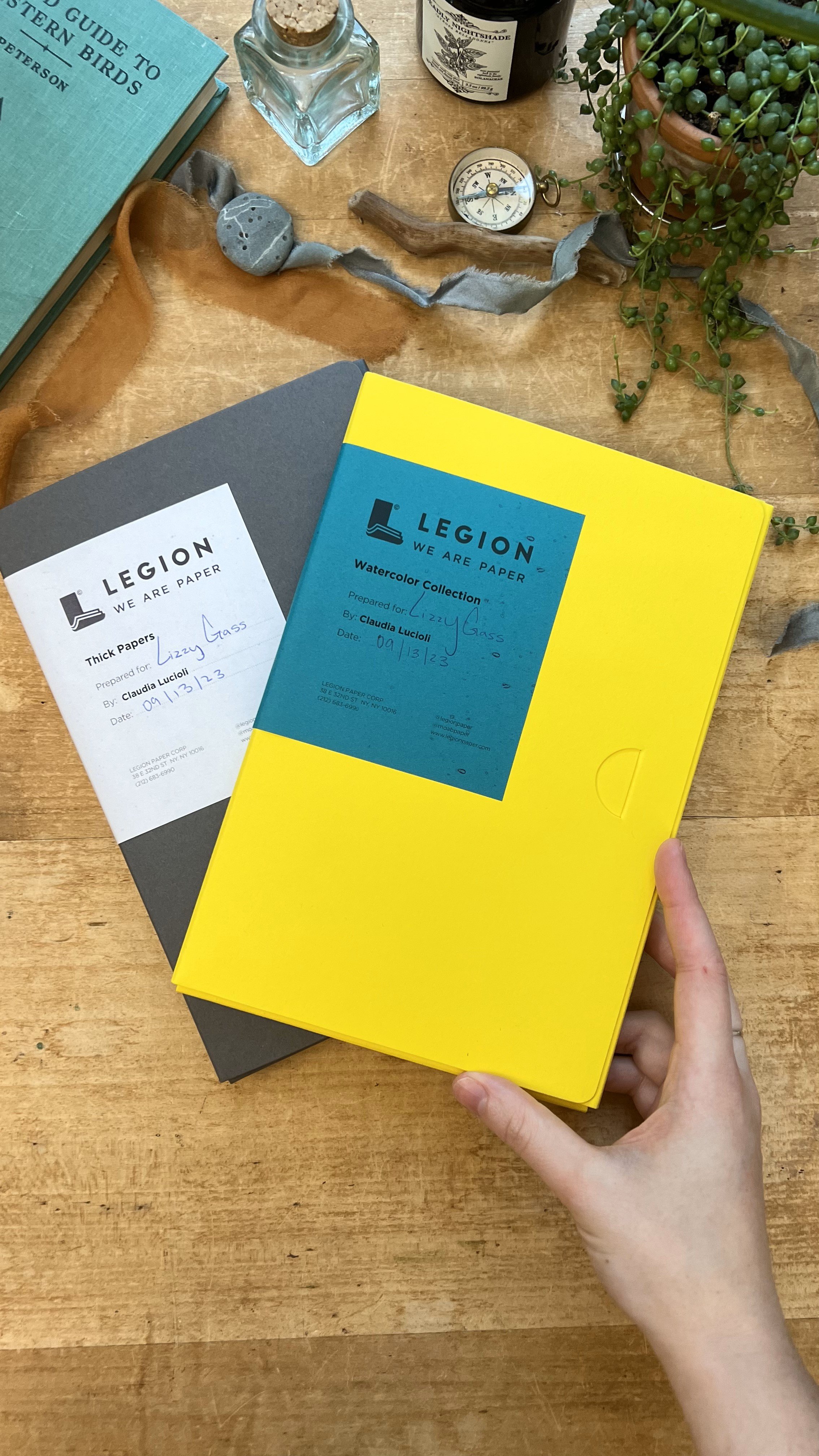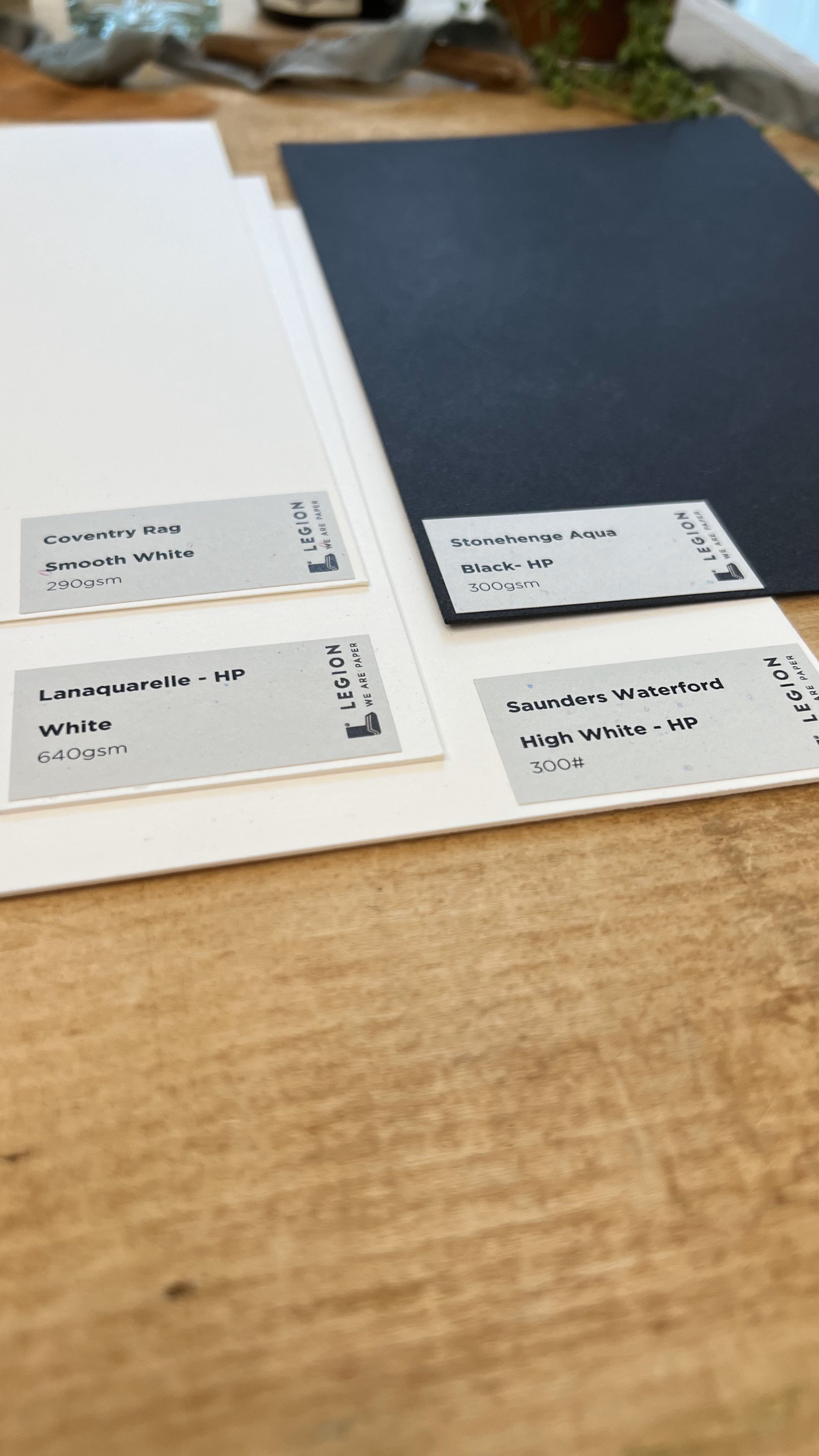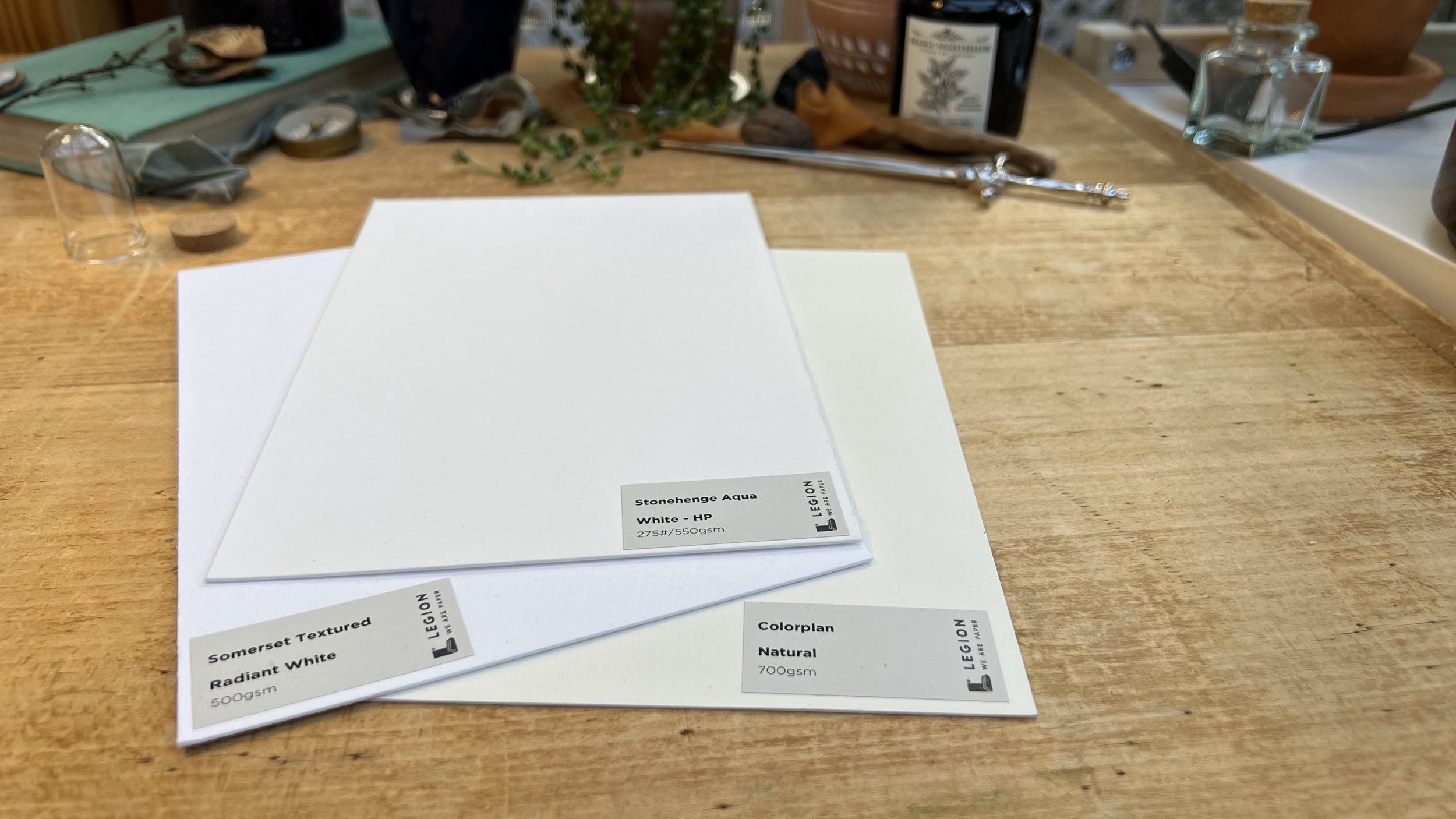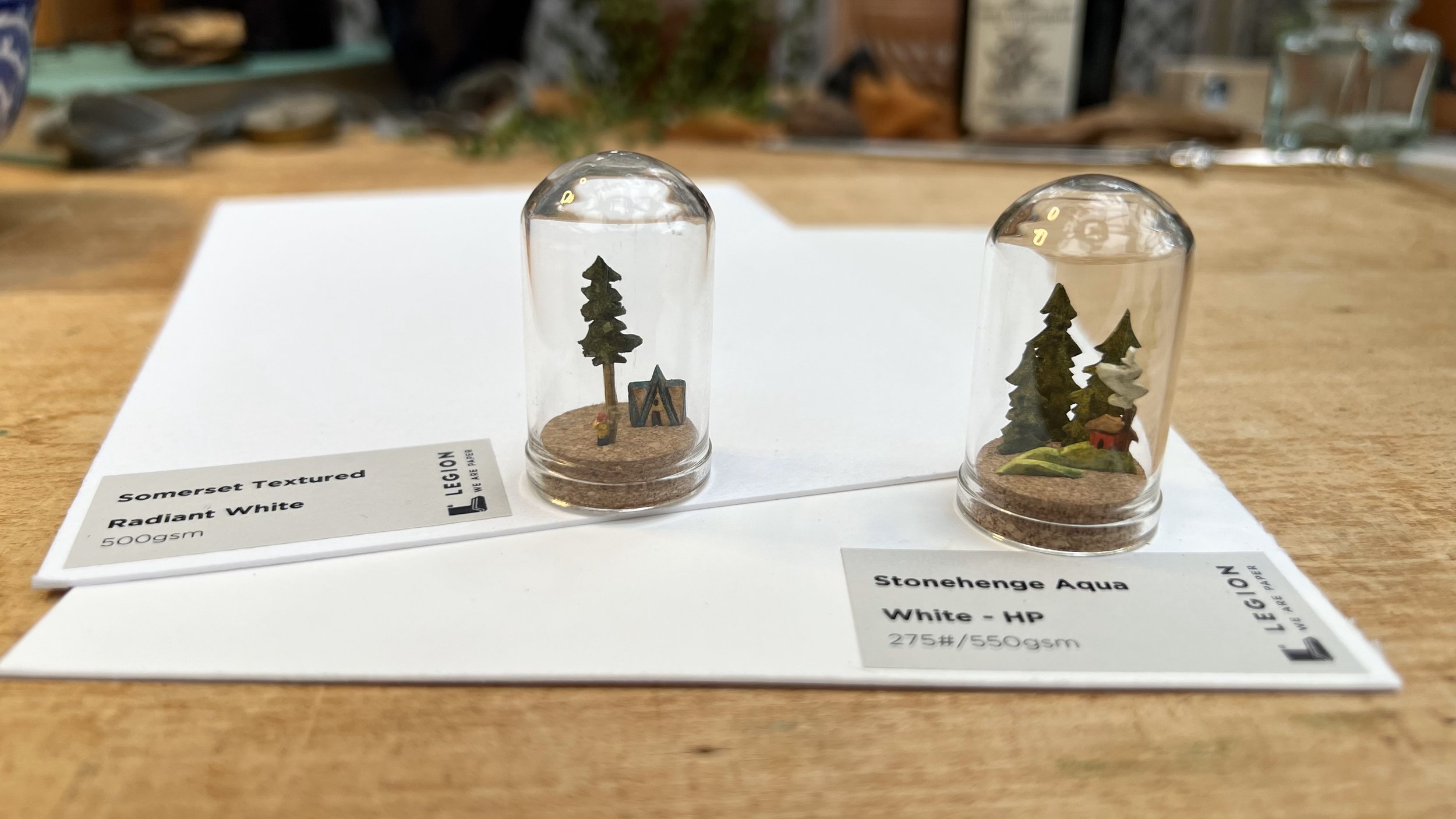Artist Program: Lizzy Gass, an artist painting real and fantastical worlds.
Join our experienced artist as she embarks on an insightful journey testing various watercolor papers. Find in-depth reviews, performance assessments, and expert recommendations to select the perfect paper for your watercolor paintings.
Tell us about yourself and your work!
I’m a painter who uses watercolor and gouache to create fantastical worlds and capture treasured memories. With a background in chemistry and nursing, I blend my love of science, fairytales, and the outdoors to create whimsical and detailed paintings that encourage the viewer to step into a new world or glimpse snippets of magic in the everyday. My work is inspired by a childhood spent reading fanciful stories and sci-fi books, building forts, and playing in the woods. I hope to evoke a sense of enchantment through my art, eliciting thoughts of raindrops and wildflowers, cups of tea, and reading books by a cozy fire. My artistic practice includes a range of projects, from detailed watercolor and ink illustrations to gouache landscapes and miniature, layered-paper dioramas.
Which papers did you test in the samplers sent?
In the watercolor collection, I tested four papers: Stonehenge Aqua Black HP (300gsm), Coventry Rag Smooth White (290 gsm), Lanaquarelle HP White (640 gsm), and Saunders Waterford High White HP (300#).
I've used (and loved) the Stonehenge Aqua (300#) for years, it's been a favorite for larger pieces where I need a sturdy paper that takes paint well. It has just the right amount of texture to add depth to the painting without requiring too much editing when I go to scan a painting and make prints. I didn't re-test the sample, since I already know I love it.
Initially, I tested all four papers by getting an area wet and adding watercolor. The Coventry Rag, Lanaquarelle, and Stonehenge Aqua (black) all worked well with this, but the layers of the Saunders Waterford separated, making bubbles in the paper. I then made a small painting with gouache on each paper, and the Saunders Waterford and Coventry Rag were my favorites.
For the thick papers, I tested the Somerset Textured Radiant White (500 gsm), Stonehenge Aqua White - HP (550 gsm), and the Colorplan Natural (700 gsm). Since I use thicker papers for dioramas, which I assemble in wooden boxes and small glass domes, I tested these papers by using them to make small dioramas.
Which papers worked well for your work?
In the watercolor collection, the Stonehenge Aqua, Coventry Rag, and Saunders Waterford worked best for me. They accepted multiple layers of paint without buckling or pilling, and the paint moved beautifully on the papers.
For the thick papers, the Somerset Textured and Stonehenge Aqua both worked very well. The thickness of the papers allowed me to cut at an angle (rather than straight through the paper), which adds dimension to the finished pieces. Both papers also held up well when I cut very narrow pieces - small areas of paper were able to support much larger sections, such as the smoke coming out of the chimney in the diorama I made with the Stonehenge Aqua or the top of the tree being supported by the relatively narrow trunk in the diorama made with the Somerset Textured.
What are important characteristics of a paper for your particular kind of work?
For my work, it's really important that the paper is sturdy - I work both wet on wet and wet on dry, and I paint in many layers for both watercolor and gouache. I look for paper that can get wet and dry out without changing shape and can withstand repeated brush strokes without pilling or disturbing the fibers that form the paper. It's important to me that an area of the paper that gets wet can dry and look the same as it did before - the Coventry Rag was a great example of this, since I was able to apply a large amount of water to the surface, and when the water dried, the surface of the paper was unchanged. Depending on the project, it can be important for me to remove tape without tearing the paper surface. Some papers that are wonderful to paint on don't hold up well to tape, so it's always something I check before starting a large piece. The surface of the Stonehenge Aqua black tore when the tape was removed, although I didn't test it with Holbein's soft tape, which usually is the least likely to tear paper.
For the dioramas, I also need sturdy paper, and it's important for me to be able to cut tiny pieces of the paper and have it still hold together.
What will be your go-to paper moving forward?
I'm looking forward to working more with both the Saunders Waterford HP and the Coventry Rag; they both held up well with multiple layers of paint and the color and texture of the papers are lovely. I've used (and loved) Legion's Incisioni paper for years, and it's been my go-to for both watercolor and gouache, but I'm looking forward to testing out these new papers further!
The Stonehenge Aqua White - HP (550gsm) was my favorite of the thick papers, and I'll definitely be using it for more dioramas and paintings in the future. It's the perfect thickness (not too hard to cut, but the individual diorama components can stand up on their own even if they're narrow) and the smooth texture makes it easy to see the tiny details of the painting.
Anything else you found interesting and want to include.
I'm always amazed by how important it is to choose the right paper for a project, and how small changes, such as watercolor vs gouache, can change which paper is "best" for a given piece. It was hard to guess ahead of time which papers would or wouldn't be ideal for the way I enjoy painting, and I'm looking forward to testing all the different papers over time.
These paper samplers are such a great idea, and it's definitely worth the time to test out different papers to find the best one for a particular project. It's hard to find the perfect paper when you have to invest in a whole block or sheet of each kind in order to try them, but these sets make it easy to pick a few papers to test more in-depth without ending up with large quantities of paper that isn't a good fit.









